What Is Application Integration: Tools, Examples, Best Practices
Summarize this article with:
✨ AI Generated Summary
Application integration connects disparate systems to streamline workflows, enhance efficiency, and enable real-time automation across on-premise and cloud environments. Key benefits include synchronized data consistency, intelligent automation with AI-driven tools, and scalable architectures like iPaaS, API-first, and event-driven models. Best practices emphasize clear objectives, security by design, comprehensive documentation, and adaptive architectures to address challenges in data consistency, security, scalability, and maintenance.
Your organization utilizes multiple applications to perform different tasks on a daily basis. However, certain conditions might require integrating these applications to automate complex tasks. Integrating applications can enable you to optimize operations, saving resources and time.
This article explains application integration, some common examples, and the best practices for performing the integration process.
What Is Application Integration and Why Does It Matter?
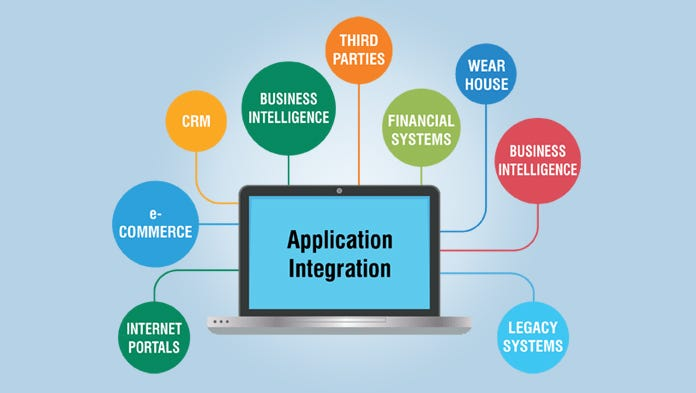
Application integration is the process of connecting different systems and applications designed for specific purposes together to optimize workflow efficiency. Enabling applications to communicate allows you to modernize infrastructure and perform agile business operations while creating seamless data flows across your entire technology stack.
In traditional business approaches, applications are siloed, disconnected and operating independently. This creates a problem when a scenario arrives where you must utilize multiple applications together to perform specific tasks, requiring manual intervention. Modern application to application integration eliminates these barriers by establishing automated communication channels between systems.
However, for modern businesses, application integration has become a part of daily operations, reducing the barriers between on-premise systems and cloud-based applications. Contemporary integration approaches leverage event-driven architectures, API-first designs, and intelligent automation to create responsive, scalable integration ecosystems that adapt to changing business requirements.
What Is the Primary Purpose of Application Integration?
The key purpose of application integration is to streamline application communication, resulting in enhanced performance and efficient time utilization while reducing associated costs. Modern integration approaches extend beyond simple connectivity to enable intelligent automation and real-time decision making capabilities.
Benefits include:
- Integrating applications across on-premise and cloud systems allows you to synchronize data, providing consistency across various platforms while enabling hybrid and multi-cloud deployment strategies.
- With data present in dispersed applications, application integration enables you to build new solutions based on already existing systems, creating compound value from existing technology investments.
- Application integration provides pre-built solutions for common integration challenges, such as load balancing, authentication, error handling, and schema transformation. It can help you create robust, scalable applications that adapt to evolving business needs.
- Advanced integration platforms now incorporate artificial intelligence capabilities to automate mapping decisions, predict integration failures, and optimize data flows without manual intervention.
How Does Application Integration Differ from Data Integration?
By now, you must have understood what application integration is. However, there might be a common question that might arise along your application development journey: How is application integration different from data integration?
The table below highlights the key differences (see the in-depth comparison here):
What Are Common Use Cases and Examples of Application Integration?
Real-world examples span across industries and demonstrate the transformative power of seamless connectivity:
- Healthcare: Integrating patient records with an electronic healthcare application so physicians and specialists can monitor patient health in real time, enabling coordinated care and reducing medical errors through shared access to comprehensive patient histories.
- Banking: Connecting in-house customer-data systems, loan-application services, and other backend features to mobile banking apps, creating unified customer experiences that span multiple touchpoints and regulatory requirements.
- Marketing: Integrating CRM, marketing-automation, and analytics platforms to optimize campaigns and customer engagement, enabling personalized customer journeys and real-time campaign optimization based on customer behavior.
- Resource Planning: Streamlining business processes by connecting an ERP system with supporting applications like inventory management, human resources, and financial systems to create end-to-end visibility and automated workflows.
- E-commerce: Connecting online storefronts with inventory management, payment processing, and shipping providers to create seamless customer experiences from purchase through delivery.
What Are the Different Types of Application Integrations?
Application integration can be broadly divided into three primary types, each serving distinct business objectives:
Data Integration
Data integration involves integrating data from dispersed sources into a single repository, allowing easy access and richer insights. This includes migrating data from databases, applications, or flat files into a data warehouse for analytics and reporting. Modern data integration approaches leverage change data capture, real-time streaming, and automated schema evolution to maintain data freshness and accuracy.
Business-Level Integration
Business-level integration enhances organizational efficiency using business-process automation and artificial intelligence. This approach connects applications at the workflow level, enabling automated decision-making and process orchestration. Examples include connecting a CRM with an accounting application to streamline order-to-cash workflows, or integrating supply chain applications to automate procurement and inventory management processes.
Communication Integration
Communication integration, which has evolved significantly from traditional presentation integration approaches, now focuses on creating unified communication channels between applications through modern messaging patterns, event streaming, and API-first architectures. This enables applications to exchange messages, notifications, and commands in real-time, supporting event-driven architectures and microservices communication patterns.
What Are the Key Application Integration Architecture Patterns and Technologies?
Point-to-Point

Point-to-point integrations are direct, customized connections often implemented via APIs or custom code. While they solve specific problems efficiently, they become complex and brittle as the number of applications grows. Modern implementations leverage API gateways and contract-first development to maintain stability while preserving the directness of point-to-point connectivity.
Hub-and-Spoke
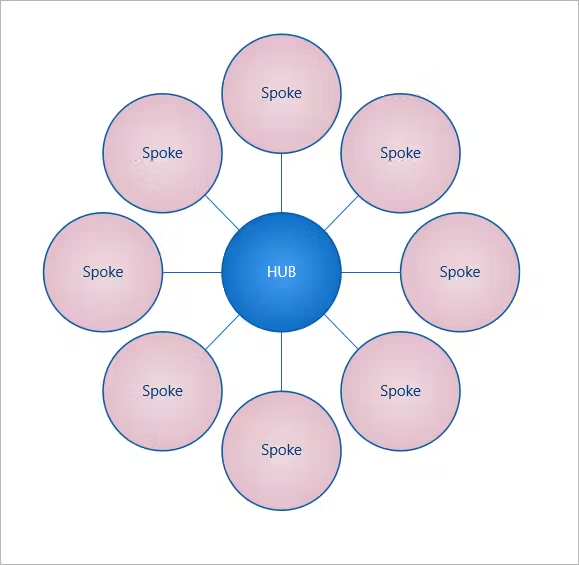
The hub-and-spoke model introduces a central hub to manage all data exchanges, reducing point-to-point complexity and improving scalability and security. Modern implementations incorporate intelligent routing, transformation capabilities, and centralized monitoring to create highly efficient integration architectures that scale with organizational growth.
iPaaS

Integration Platform as a Service (iPaaS) is a cloud-based environment offering pre-built connectors, API and data-management capabilities, and publish/subscribe messaging. Modern iPaaS solutions incorporate artificial intelligence for automated mapping, self-healing capabilities, and adaptive scaling to handle varying workloads efficiently.
APIs

Application Programming Interfaces (APIs) expose specific functionality and data in a secure, request/response model, enabling granular, real-time integration. Contemporary API strategies emphasize GraphQL for flexible data querying, asynchronous APIs for event-driven communication, and AI-enhanced API management for predictive scaling and automated security enforcement.
Enterprise Service Bus (ESB)

An ESB provides a shared communication bus where once an application is connected to the bus, it can exchange data with any other connected application. Modern ESB implementations leverage microservices architectures, containerization, and event mesh topologies to create more flexible and resilient integration infrastructure that supports both traditional and cloud-native applications.
How Can AI-Driven Integration Automation Transform Your Application Integration Strategy?
Artificial Intelligence has revolutionized application integration by automating historically manual processes while enhancing predictive capabilities and reducing human error. AI-powered integration platforms now dynamically map data schemas, predict pipeline failures, and optimize workflows without human intervention.
Intelligent Mapping and Schema Evolution
Modern AI integration tools leverage machine learning to analyze data patterns and automatically suggest field mappings between different applications. Natural Language Processing capabilities enable non-technical users to describe integration requirements in plain language, which AI converts into executable workflows. This democratization allows business users to construct integration pipelines through conversational interfaces while maintaining enterprise-grade security and governance protocols.
Predictive Analytics for Integration Optimization
AI-enhanced platforms analyze usage patterns and automatically allocate resources during traffic spikes while detecting security threats through real-time anomaly detection. Machine learning models predict schema drifts and enforce version compatibility ahead of runtime failures, reducing integration maintenance costs significantly. These predictive capabilities extend to performance optimization, where AI suggests bottleneck resolutions and automatically scales resources based on predicted workload patterns.
Automated Governance and Metadata Management
Artificial intelligence enhances metadata management by autonomously tagging data lineage across distributed systems, ensuring governance compliance without impeding development agility. AI systems continuously monitor integration health, automatically generating documentation, and providing intelligent alerting that distinguishes between routine operational events and critical failures requiring human attention.
What Modern Governance and Compliance Frameworks Should Guide Your Integration Strategy?
Contemporary integration environments require sophisticated governance frameworks that balance developer autonomy with centralized compliance requirements. Modern approaches emphasize policy-as-code implementation and federated governance models that enable innovation while maintaining regulatory adherence.
Policy-as-Code Implementation
Governance-as-code embeds compliance rules directly into integration pipelines through automated policy enforcement. Modern platforms use declarative rules for data sanitization, rate limiting, and automated documentation generation. This approach shifts governance from reactive auditing to proactive prevention, ensuring compliance requirements are built into integration workflows rather than retrofitted after deployment.
Federated Governance Models
Data mesh and microservices architectures require federated governance approaches where central teams define global standards while domain teams implement context-specific policies. This model enables organizations to maintain consistency across enterprise integration while allowing teams to innovate within defined boundaries. Automated policy validation ensures adherence to enterprise standards without creating development bottlenecks.
Regulatory Compliance Automation
Modern integration platforms incorporate automated compliance checking for regulations like GDPR, HIPAA, and SOX through intelligent data classification and automated privacy controls. AI-powered systems continuously monitor data flows for compliance violations while maintaining detailed audit trails for regulatory reporting. These capabilities extend to data sovereignty enforcement, where integration platforms automatically route data processing to compliant geographic regions based on regulatory requirements.
What Are the Primary Challenges in Application Integration?
Maintaining Data Consistency
Integrations can introduce inconsistent data, harming decision-making processes and creating unreliable analytical outcomes. Modern platforms like Airbyte help mitigate this through automated data validation, schema enforcement, and real-time synchronization capabilities.
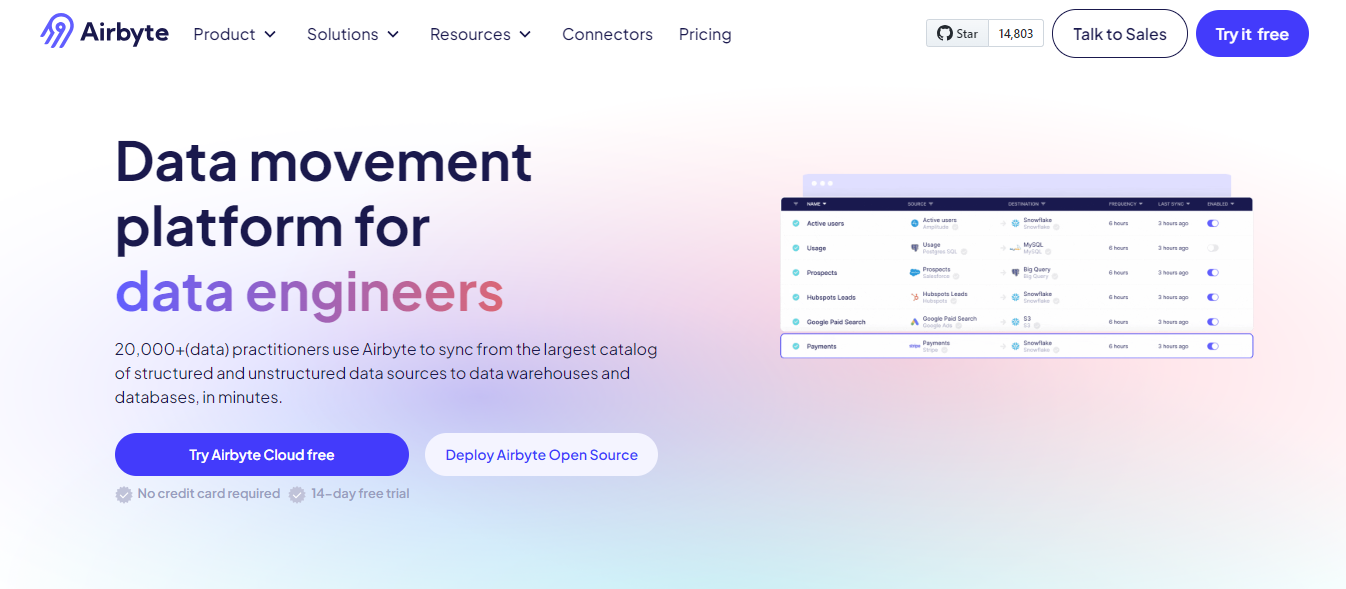
Key Airbyte features include Connector Development Kit for rapid custom connector creation, GenAI workflows for intelligent automation, rigorous security certifications including SOC 2 and ISO compliance, multiple customization options (UI, API, Terraform, PyAirbyte), and flexible deployment models that support cloud, hybrid, and on-premises environments.
Security and Access Control
Robust encryption protocols, authentication mechanisms like OAuth 2.0, and fine-grained access controls are mandatory to protect sensitive data flowing between applications. Modern security frameworks incorporate zero-trust principles, confidential computing for sensitive workloads, and automated threat detection to maintain security posture across complex integration landscapes.
Performance and Scalability
Integrated systems must scale with growing data volumes and user demand to avoid latency bottlenecks and resource waste. Contemporary approaches leverage serverless architectures, event-driven scaling, and intelligent resource allocation to handle variable workloads efficiently while optimizing cost structures through usage-based pricing models.
Maintenance and Operational Excellence
Monitoring and maintaining interconnected applications requires sophisticated observability frameworks that provide end-to-end visibility across integration pipelines. Modern platforms incorporate predictive maintenance capabilities, automated healing mechanisms, and intelligent alerting to minimize operational overhead while maximizing system reliability and uptime.
What Are the Essential Best Practices for Successful Application Integration?
- Define Clear Objectives – Establish specific, measurable outcomes for each integration initiative, focusing on business value creation rather than technical implementation details.
- Prioritize High-Value Integrations – Focus resources on integrations that deliver the greatest business impact first, creating momentum for broader integration initiatives.
- Implement Security by Design – Enforce encryption, strong authentication, and zero-trust principles from the beginning rather than adding security as an afterthought.
- Maintain Comprehensive Documentation – Capture architecture decisions, data flows, business logic, and operational procedures to ensure long-term maintainability and knowledge transfer.
- Automate Testing and Validation – Implement continuous testing frameworks that catch integration failures early and validate data quality throughout the integration lifecycle.
- Design for Change – Build integration architectures that adapt to evolving business requirements and technology changes without requiring complete rebuilds.
What Tools and Platforms Should You Consider for Application Integration?
1. Dell Boomi
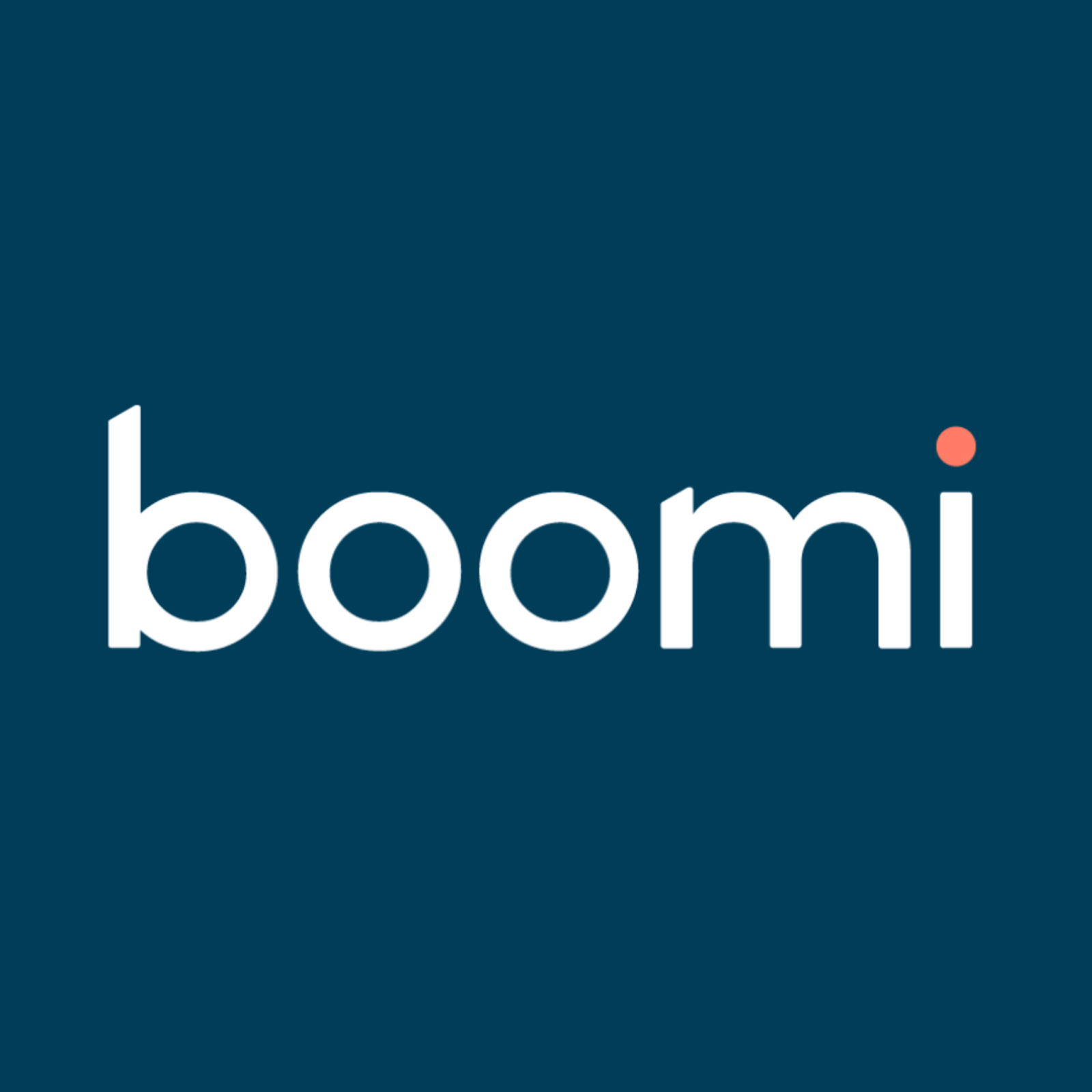
Dell Boomi is an iPaaS solution that offers pre-built connectors, data cataloging, and synchronization capabilities across enterprise ecosystems via an intuitive user interface. The platform provides drag-and-drop integration design with AI-powered suggestions for common integration patterns and automated governance enforcement.
2. SnapLogic

SnapLogic provides over 700 "Snaps" (pre-built connectors) in a no-code environment to integrate data, applications, and GenAI workflows. The platform emphasizes visual development with intelligent automation capabilities for complex transformation logic and enterprise-scale performance optimization.
3. Jitterbit
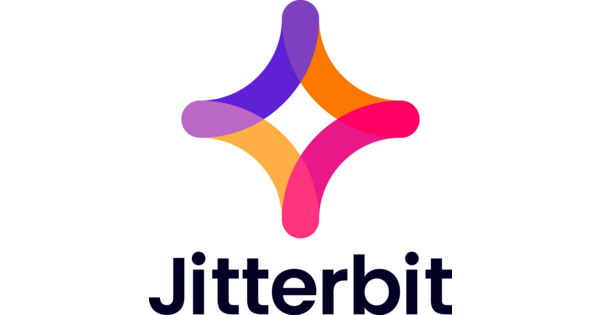
Jitterbit is an open-source integration platform offering a visual interface and extensive library of pre-built connectors for complex integration tasks. The platform combines flexibility with enterprise capabilities, supporting both cloud and on-premises deployment models with comprehensive API management and governance features.
What Are the Key Takeaways for Modern Application Integration?
- Application integration connects disparate applications to streamline workflows, reduce operational costs, and enhance business agility while enabling intelligent automation and real-time decision making.
- Understanding modern challenges including data consistency, security requirements, scalability demands, and maintenance complexity is crucial before selecting integration tools and architectures.
- Following established best practices and leveraging contemporary platforms incorporating AI capabilities, event-driven architectures, and governance automation enables successful, future-proof integrations.
- The evolution toward API-first development, federated governance models, and AI-enhanced integration capabilities represents the future direction of application integration strategies.
FAQs
What are the four types of application integration?
Communication, business-level, data integration, and API-based integration, each serving different organizational objectives and technical requirements.
What is an example of an integrated application?
Connecting sales data from Shopify to an analytics platform like Snowflake for insight generation, enabling real-time inventory management and customer behavior analysis.
What is the difference between API and application integration?
APIs are interfaces that let software communicate through standardized protocols; application integration is the broader process of linking multiple systems to achieve comprehensive business objectives and workflow automation.
Why is application integration important?
It synchronizes data across systems, eliminates organizational silos, enables new solutions to be built on existing applications, and creates opportunities for intelligent automation and improved decision making.
What is an application integration framework?
A comprehensive software platform that provides structured approaches, pre-built components, and governance capabilities for connecting different internal or external applications and systems while maintaining security and compliance standards.

.webp)
